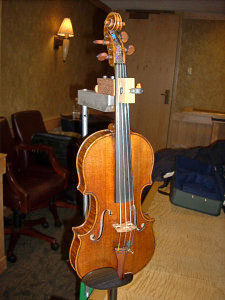What do you do when 20 ultra-rare violins from the 1730s show up in town, ready to be measured? Further, what exactly would you want to learn from these measurements? For many of us, the first thing that jumps to mind is, “Why do these particular instruments sound so much better than others of similar vintage and construction?” That’s the million- (or more accurately, the 2 million-) dollar question.
|
ADVERTISEMENT |
To answer that question, one needs consider many factors, including the type of wood used in construction, the wood grain and density, and the humidity at the time the violin was built. However, the most obvious and important factor is the exact shape and dimensions of the instrument, and it is here, in measuring and analyzing those features with incredible precision, that high-tech coordinate metrology comes into play.

Of course, getting those data is not easy. For one thing, you don't want to touch these violins with any type of mechanical instrument that might damage the finish. After all, these instruments are valued at $2 million each and up.
…
Add new comment